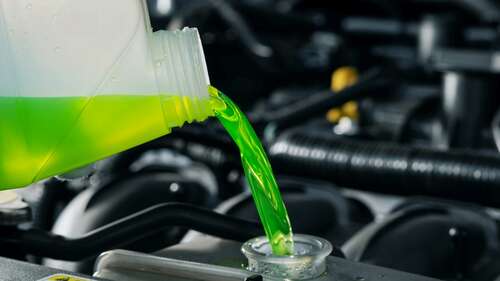
Inorganic Additive Technology (IAT) coolant is the oldest and most recognizable antifreeze out there. It’s bright green in color and is typically found in older vehicles. The term “inorganic” comes from the fact that they use silicates as heat inhibitors. They’re great for cast iron, brass, copper, and aluminum parts in older vehicles. However, they should be changed every two or three years or 30,000 to 45,000 miles.
On the other hand, Organic Acid Technology (OAT) uses Organic Acids as the inhibitor. It’s orange in color and is typically found in GM, Saab, and Volkswagen vehicles. The typical lifespan is around five years or 150,000 miles. This coolant is typically interchangeable with the term “Dex-Cool.” Hybrid Orangic Acid Technology (HOAT) coolants — which come in a handful of variants — use a blend of both worlds. The most common one is yellow and is found in Ford, Chrysler, and European vehicles. HOAT coolants can last up to 10 years or 180,000 miles.
NAP-free HOAT coolants are made without nitrates and typically have a turquoise/blue color; you’ll find them in BMW, Volvo, Tesla (for battery cooling), and Mini vehicles, largely. Finally, Si-OAT is a form of HOAT coolant that is purple — it’s found in Mercedes-Benz, Audi, Volkswagen, and Porsche vehicles.

